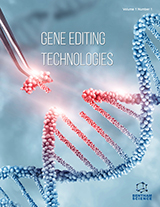Abstract
Motility is a characteristic function of the male gamete, which allows spermatozoa to actively reach and penetrate the female gamete in organisms with internal and external fertilization. Sperm motility is acquired under the control of many extrinsic and intrinsic factors and is based on the specialized structure of the sperm flagellum. An overview of how the sperm flagellum is organized and works to support cell motility is presented, with special focus on the molecular mechanisms and factors involved in the development and maintenance of sperm motility. Data obtained both in organisms with external fertilization, such as sea urchins, ascidians or fishes as well as those relying on internal fertilization, such as mammals, are critically analyzed.
In most animal species, sperm motility is dependent on a long appendage called flagellum. Flagella are essential organelles found in most eukaryotic cells: their basic structure is the axoneme, built of a scaffold of microtubules and responsible for movement generation in an autonomous manner provided energy in the form of ATP is present. Beating of flagella allows movement, using thrust on the milieu surrounding sperm cells and is responsible of the translational drive of spermatozoa either in the fluid or by contact with structures cells or tissues. The present paper aims to describe:
1. The biochemical and structural elements of the “9+2” flagellar structure, so called axoneme, a complicated arrangement of at least 250 different protein subunits which sustains motility.
2. The mechanisms of wave generation and propagation along the axoneme of flagella, stating that in paradigms of wave propagation, a clear distinction is made between the dynein dependent microtubule sliding (oscillatory motor) and the bending mechanism (including regulator of wave propagation). The waves propagation is supported by a bending/relaxing cyclic mechanism which propagates in register, but frame-shifted with the powering action of the dynein-ATPase motors all along the axoneme. While knowledge has been largely accumulated on the motor components, little is known about the elements regulating the bending processes.
3. Guidance of spermatozoa is closely dependent on flagellar behavior. An overview of the various ways by which a spermatozoon can orient itself or be oriented to the corresponding egg in order to improve fertilization success is presented. As specific guidance mechanisms occur in response to chemicals such as Ca2+ ions controlling asymmetry of flagella beating special emphasis is devoted to such regulatory aspects. A discussion is also devoted to the way a cell elaborates its own flagellum and details possible hypothesis able to explain the origin of the axoneme, recognized as an ancestral structure with a high degree of conservation, as well as phylological aspects of this unique mechanical device used in an extremely large variety of situations to insure efficient cell movements of the male gametes, but also many unicells, such as the green algae Chlamydomonas, used as models to better understand the properties of this ubiquitous organelle due to its high degree of structure and function conservation all along evolutionary tree.
Keywords: Axoneme, Calcium ions, Dynein, Flagella, Membrane, Microtubules, Molecular motors, Motility, Motility activation, Regulation, Phosphorylation, Osmolarity, Energy, Viscosity.






















